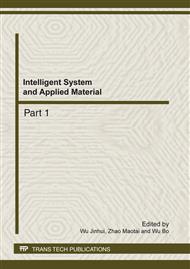p.31
p.36
p.42
p.47
p.52
p.57
p.61
p.65
p.70
The Application of PID Based on Optimized RBF in Thickness Control of Strip Steel
Abstract:
The strip thickness control system is difficult to establish an accurate mathematical model, and traditional PID control strategy has a poor adaptive ability, so the effect of control is always not satisfying. According to the problems above, a new control strategy of self-tuning PID controller based on RBF neural network whose parameters are optimized by PSO algorithm is proposed in the paper. The control method integrates advantages of RBF neural network as well as PID controller and good global search capability of PSO algorithm. The simulation results indicate that the method not only improves control performance and dynamic quality, but also has strong self-adapting ability and robustness. It achieved a very good control effect when used in strip thickness control system that proved the correctness and effectiveness of the control method.
Info:
Periodical:
Pages:
52-56
Citation:
Online since:
February 2012
Authors:
Price:
Сopyright:
© 2012 Trans Tech Publications Ltd. All Rights Reserved
Share:
Citation:


